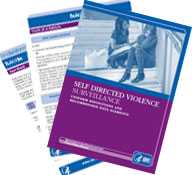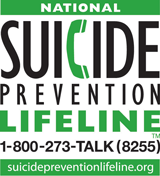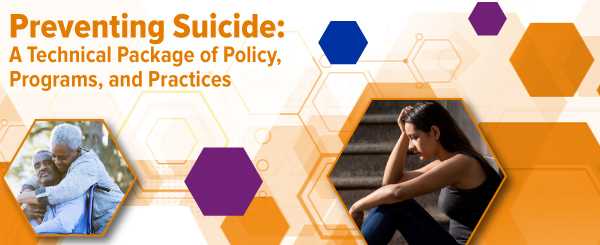Suicide Prevention

Suicide is a serious public health problem that can have lasting harmful effects on individuals, families, and communities. While its causes are complex and determined by multiple factors, the goal of suicide prevention is simple: Reduce factors that increase risk (i.e. risk factors) and increase factors that promote resilience (i.e. protective factors). Ideally, prevention addresses all levels of influence: individual, relationship, community, and societal. Effective prevention strategies are needed to promote awareness of suicide and encourage a commitment to social change.
Data & Statistics
Featured Topic
Publications & Resources
-

- Suicide: At a Glance [PDF 139KB]
- Uniform Definitions for Self-Directed Violence [PDF 1.31MB]
- Connecting the Dots: An Overview of the Links Among Multiple Forms of Violence [PDF 2.51MB]
- Actionable Knowledge series
- The Relationship Between Bullying and Suicide: What We Know and What it Means for Schools [PDF4.7MB]
- Recommendations for Media Reporting on Suicide [PDF 979KB]
Need Help? Know Someone Who Does?

Contact the National Suicide Prevention Lifeline
- Call 1-800-273-TALK (1-800-273-8255)
- Use the online Lifeline Crisis Chat.
Both are free and confidential. You’ll be connected to a skilled, trained counselor in your area.
For more information, visit the National Suicide Prevention Lifeline.
- Page last reviewed: October 3, 2017
- Page last updated: October 3, 2017
- Content source:


 ShareCompartir
ShareCompartir


